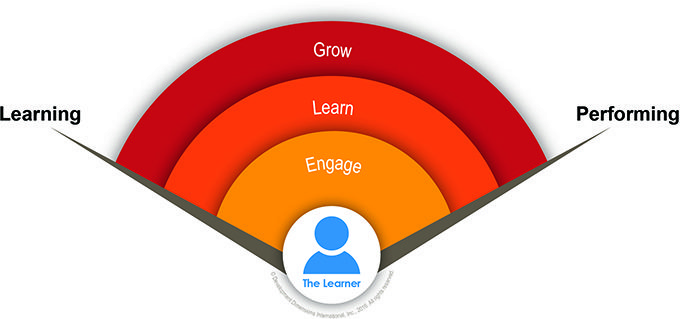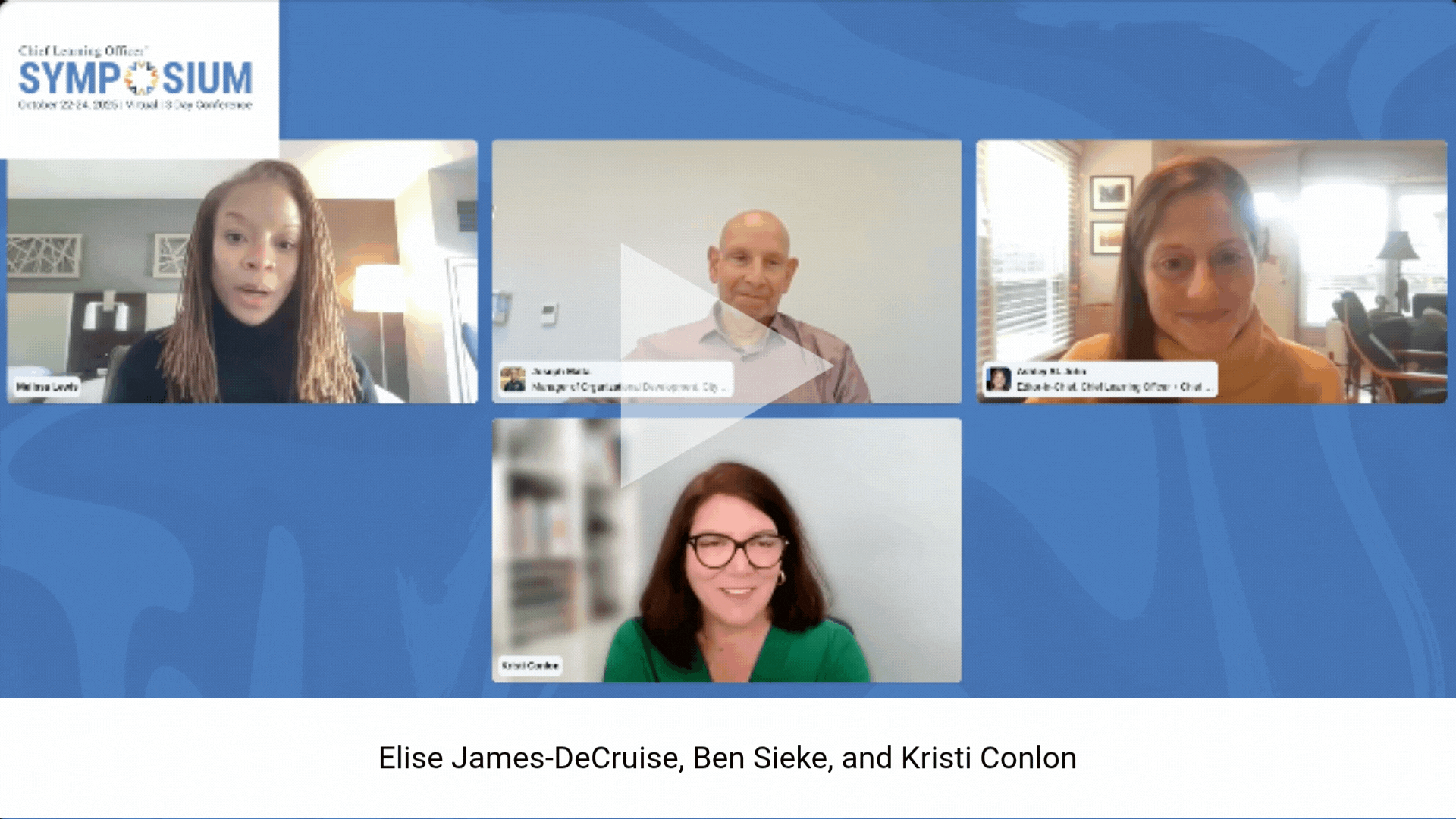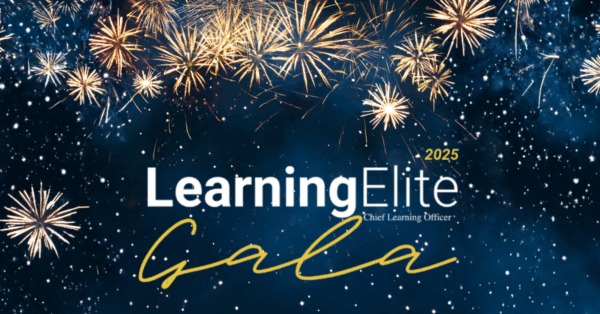
In the late 19th and early 20th centuries, German psychologist Hermann Ebbinghaus completed the seminal research on memory. He was the first to describe the learning curve, which depicts the rate at which people learn information. He also discovered the spacing effect, the superiority of “spaced” vs. “massed” learning. For example, when students cram for a test, they may do well yet have little to no retention beyond the exam. The same material learned over a more extended time period, however, will produce greater long-term retention.
Ebbinghaus’ third major discovery, the forgetting curve, is more cautionary. His research showed that after 31 days, only about 20 percent of particular memories remained present. Our ability to “crush” the forgetting curve is a critical imperative if we are to build the leadership and workforce capability our organizations must have to be successful. This challenge is made more formidable by the complexity of today’s learning environments.
The acronym CAT — content, access and technology — is shorthand for the current relationship between learners and information. Today, it is not only about the content, but about how learners access that content and the technology use to create and distribute it.
Given that reality, today’s “learning experience manager” — a term more descriptive of the new profile necessary to create effective experiences than the traditional term “course designer” — must consider memory dynamics and seek new ways to grab the learner’s attention. As organizations shift the responsibility for learning onto learners, they have to take charge of their experiences with the guidance of mentors to create meaningful personal focus.
Recently, in collaboration with Carnegie Mellon University, Development Dimensions International developed a conceptual model to understand the plight of the modern learner and the mechanisms to successfully create impact (Editor’s note: One of the authors works for DDI). The resulting “fan model” refers to three stages necessary to produce successful learning interventions (Figure 1). The fan will collapse, and the gap between learning and performing will narrow or be eliminated by successfully addressing each stages’ requirements. The stages are:
- Engage: While attention always has been a prerequisite to learning, its importance cannot be overstated in today’s era of information ubiquity. There are numerous ways this can be done, such as through motion graphics on the small screen, a credible facilitator/leader at the top of their game in front of a physical or virtual classroom, a research study that’s relevant to the training audience, or an emotional appeal. Any of these drive learners to stop “filtering out” mechanisms, and focus on the information, if only for a few seconds.
- Learn: Unlike Ebbinghaus’ experiments, our learning journeys aren’t administered in controlled laboratory conditions. They are designed to be porous, to maximize both the transfer of learning environment and application. One obvious example is how social media and online communities have changed how learners communicate and share information. This interactivity has its pros and cons, however. While it is easier for learners to share information, they might be less inclined to do so if their comments are subject to evaluative statements and actions from superiors. Gamification will continue to push the boundaries of learning design in years to come, as we explore new ways to apply it. For now, gamification is an approach that has shown to have legs, but we don’t know how long and sturdy those legs are.
- Grow: Never has the opportunity been greater to propel individual learners toward mastery of a particular skill or knowledge set. While significant acceleration moments might be provided, real and lasting memory — the precursor to personal and organizational impact — is more likely to come, as Ebbinghaus first noted, through spaced experiences learners have over time — what we now call learning journeys.
Cardinal Health, a Fortune 500 health care services company, created learning journeys for five levels of formal and informal leaders. The learning journeys employ a cohort approach that brings together formal and informal learning activities spread out over time — the spacing effect in action — customized for each level.

“Our wild and crazy idea was to have intact reporting groups have common shared experience with the journeys,” said Julie Blust, director of learning management. “This enables transparency, consistent language, learning together, open dialogue, and positive and reinforcement coaching.”
5 Ways to Minimize Forgetting
How can we use the nexus of current learning science, organizational dynamics and technology to produce maximal effect over time, and minimize forgetting and learning waste? Let’s examine five valuable approaches.
- Create multiple spaced impressions. The term impression means what is done rather than its impact. Techniques such as “push” mechanisms to mobile devices that stress key learning points, stimulate conversation, ask individuals to reflect or share with others, or dig deeper into specific areas all can be effective. Engaging virtual environments or mobile tools that “pull” learners in can be engineered for maximal impact with some combination of user control, adaptive algorithms, and engaging assets. Also, lower-tech techniques, such as brown bag lunches, office campaigns involving signage, topics of the month, seminars put forth by company or industry experts, or skilled mentors working a quality development plan, also prove effective.
- Use the power of video 2.0. The full range and power of this new video era has yet to be fully explored. Videos can demonstrate positive and negative models for skill application and technique, and they can be employed to tell stories, elicit emotions that enhance attentional staying power and stimulate reflection and insights. Learners can pause and replay them at will, and choose which ones to gloss over. When done well, videos can be more information-rich than the written word, and convey volume, inflections in body language and tone. They can break down complex tasks into component parts that can be seen clearly. Perhaps most important, they can be done much cheaper than in the past thanks to technology, such as engaging animations.
- Go mobile. Impressions today are increasingly made on the small screen. A mobile-ready strategy will make assets available to learners on their devices but will not use the true power of native applications. At the other extreme, a mobile-first approach may use the native device capabilities but likely will require more expense to create and maintain. It has yet to be demonstrated what native capabilities truly will be effective in our field. The technological boundaries seem almost limitless as we consider possibilities in biometric measurements, geolocation, or photographic/video integration. A mobile-focus strategy might be more effective in that it can use common tools across devices and take advantage of some of their native characteristics.
- Integrate social and search. While we can create comprehensive learning journeys for learners, they have a magic key: the ability to search. Search capability combines hardwired human reinforcement mechanisms with increasingly sophisticated predictive algorithms. We search, we are reinforced by getting exactly what we want, and we search again. We are addicted — and it’s an addiction that can undermine our best efforts to guide learners down a set path.
Simultaneously, we are rediscovering that learning, even in cyberspace, should be at least partially social. The aim is to reproduce the magic a skilled presenter or facilitator created in the training rooms of yesteryear. We must provide opportunities for learners to collaborate and solve real business problems together, even if they’re not sitting in the same classroom.
Talked about less often is the blend of social and search. We might search for an item to buy or, for that matter, to learn from, but we are more likely to engage with or purchase it if others have told us it is valuable. The same applies to learning. Learners can search but have those search results validate, amplify, or reinforce the learning content.
- Prove learning value through business context. Big data has ushered in an era of unprecedented opportunity and complexity. There’s less focus on looking back at “smile sheets” and more on looking forward to see how a given set of experiences affect leadership capability and organizational readiness. The cruciality of context cannot be overstated. For example, while it’s important to answer the question, “How can I develop good leaders?” it’s more useful in an organizational context to ask questions such as “How can I develop the leaders necessary to drive product innovation, global expansion, and/or process efficiencies?”
For example, drawing on its data multinational conglomerate, Hitachi rolled out a global leadership development program designed to align with its business requirements, especially the need to create customer value. Among the specific actions leaders need to take upon completing the training curriculum is developing an action plan to apply what they learn to the business.
Meanwhile, global manufacturing services company Jabil Circuit Inc. invested in a transitional leadership model program to develop leaders at all levels to align with the organization’s Manufacturing 4.0 initiatives. To reinforce learning, Jabil employed Lean and Six Sigma principles, systems and tools. “Growing our talent across all demographics to ensure they are knowledgeable and equipped to handle the changes in our industry is a key driver to our competitive edge,” said Brent Bethel, operations manager at Jabil.
Crushing the forgetting curve by engaging learners to ensure learning happens, sticks and is applied, is at the heart of what learning experience managers must do for their organizations. Understanding the stages that create effective learning, and mastering the aforementioned five approaches can help learning experience managers develop and distribute appropriate content and methodologies to drive meaningful learning and impact. Most importantly, harnessing their power in a mindful way will prepare organizations with talent necessary for their success.
Barry Stern is senior vice president and head of Accelerated Development Solutions, and Janice Burns is director of product development and manager for Development Dimensions International. Comment below, or email editor@CLOmedia.com.














